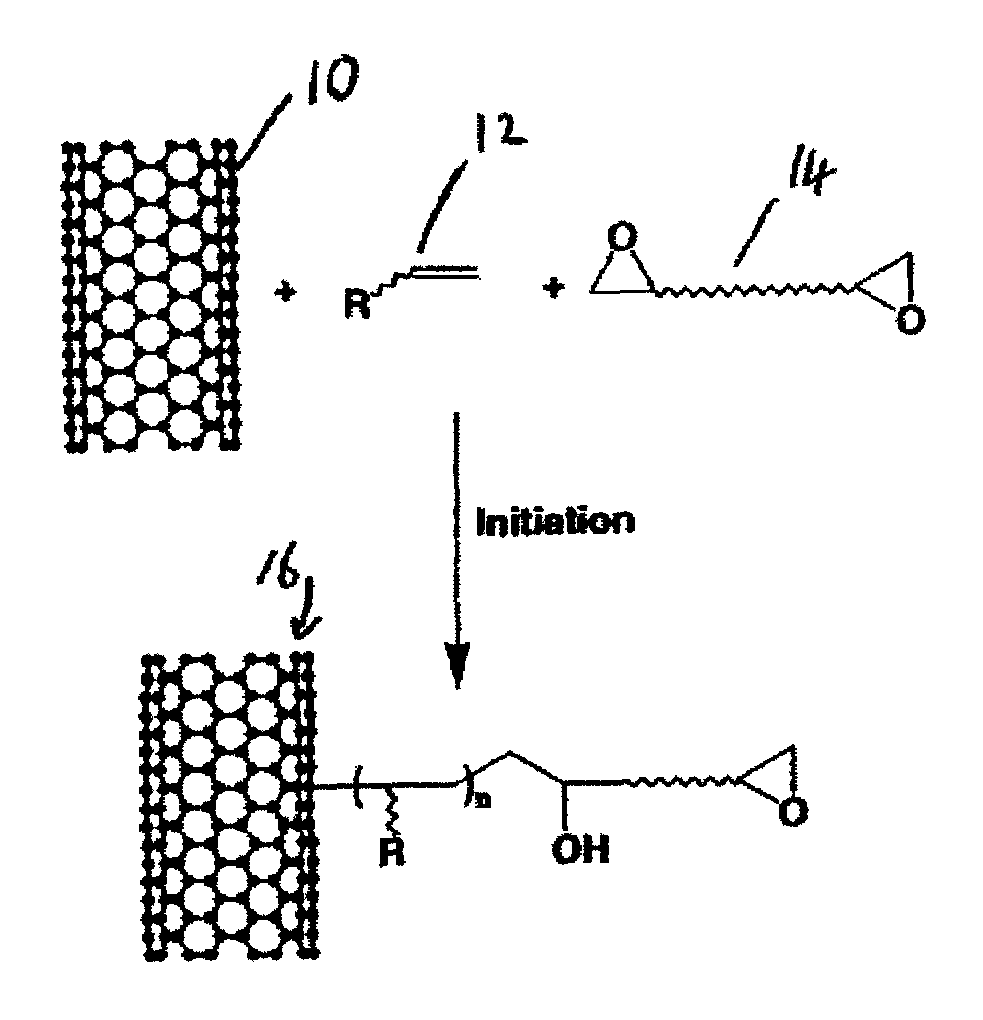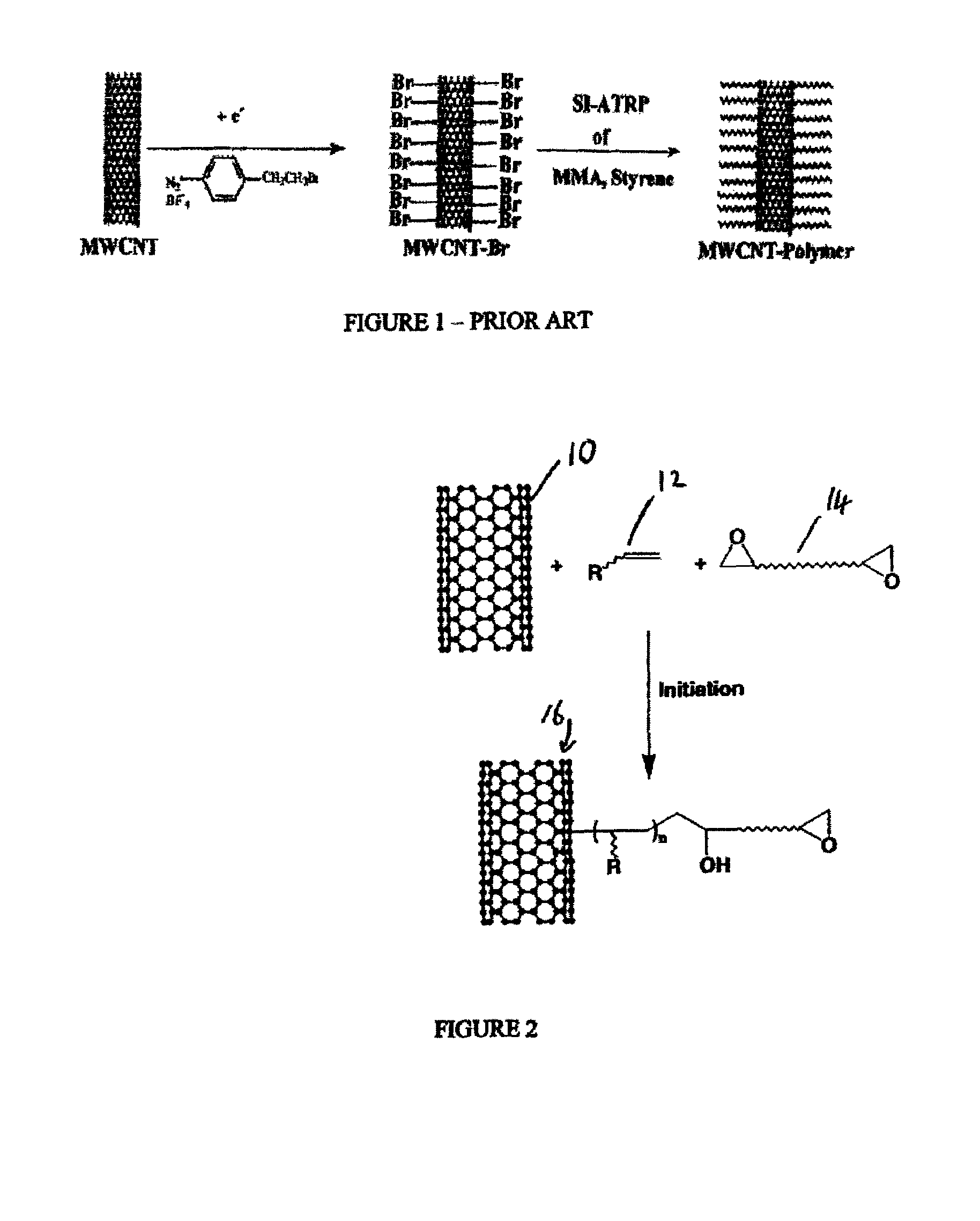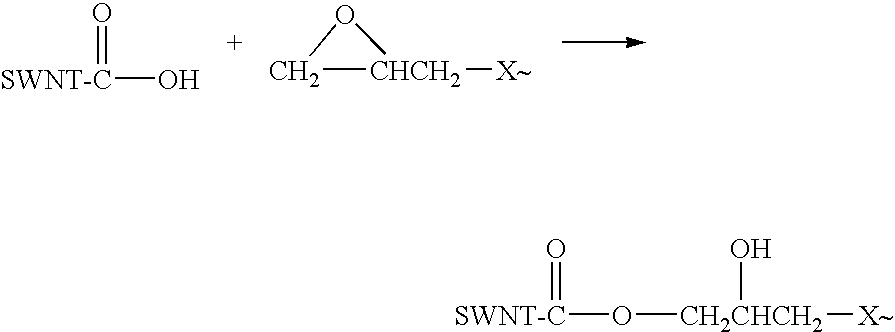Block functionalization methods
a functionalization method and block technology, applied in the field of nanotechnology, can solve the problems of inert atmosphere conditions, long steps, and more expensive than the production cost of swcnt, and achieve the effect of long steps, high cost, and high cos
- Summary
- Abstract
- Description
- Claims
- Application Information
AI Technical Summary
Benefits of technology
Problems solved by technology
Method used
Image
Examples
specific examples
[0037]The chemical name of MY0510 is triglycidyl-p-aminophenol, available from Huntsman Chemical
[0038]The molecular structure of resin MY0510 is:
[0039]
example 1
Thermally Induced Initiation
[0040]56 mg of SWCNT was ground with a mortar with a few drops of THF and the mixture was sonicated in a small amount of THF in a sonication bath for 1 hour. After removing the THF by nitrogen flow, 10 ml (9.51 g) of freshly distilled styrene and 1.08 g of commercial MY0510 resin were added to the powder and sonicated under N2 for 1.5 hrs and then stirred overnight at room temperature. The mixture was warmed up 60-70° C. for three days. Next, the mixture was diluted with THF and sonicated, and then centrifuged at 9000 RPM for 50 minutes. The precipitate was washed with THF once again by centrifugation. The solid was re-dispersed in THF. A black THF solution formed and was stable. The product was confirmed to contain functionalized SWCNTs linked to the epoxy resin.
[0041]It was determined that functionalization occurred using Raman spectroscopy, curing the functionalized SWNT and by the increased solubility.
example 2
Cationic Initiation
[0042]50 mg of SWCNT was ground with a mortar with a few drops of THF and the mixture was sonicated in 25 ml of THF in a Schlenk flask under nitrogen for half an hour. 1 ml of (1.4 M in cyclohexane) sec-butyllithium was added to the well-suspended mixture at −78° C. After stirring for one hour, a solution of MY0510 and freshly distilled styrene in 10 ml of THF was added. The mixture was stirred overnight at dry-ice temperature, then warmed up to room temperature and stirred for an additional three days. The mixture was diluted with THF to 90 ml and centrifuged at 9000 RPM for 30 minutes. The liquid layer was slightly dark and discarded. The precipitate was washed with THF once again and the liquid phase was discarded. The precipitate was inserted into 100 ml of CHCl3. After a brief sonication and centrifugation at 9000 rpm for 30 minutes, a very opaque, dark black solution resulted. The product was confirmed to contain functionalized SWCNTs linked to the epoxy res...
PUM
| Property | Measurement | Unit |
|---|---|---|
| total volume | aaaaa | aaaaa |
| length | aaaaa | aaaaa |
| diameter | aaaaa | aaaaa |
Abstract
Description
Claims
Application Information
 Login to View More
Login to View More - Generate Ideas
- Intellectual Property
- Life Sciences
- Materials
- Tech Scout
- Unparalleled Data Quality
- Higher Quality Content
- 60% Fewer Hallucinations
Browse by: Latest US Patents, China's latest patents, Technical Efficacy Thesaurus, Application Domain, Technology Topic, Popular Technical Reports.
© 2025 PatSnap. All rights reserved.Legal|Privacy policy|Modern Slavery Act Transparency Statement|Sitemap|About US| Contact US: help@patsnap.com



